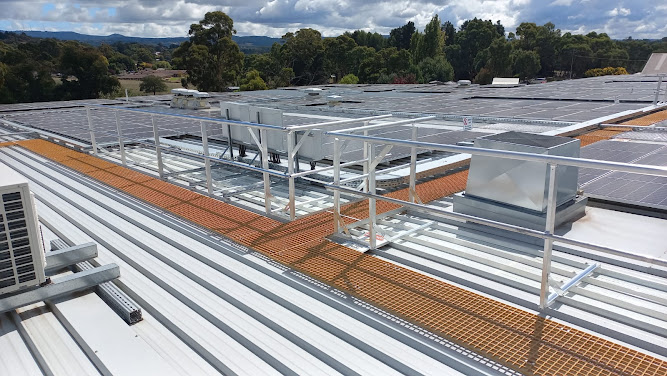External AC Platforms: Simplifying Servicing for High-Rise Buildings

Maintaining air conditioning systems in high-rise buildings can be
challenging, especially when units are mounted on exterior walls. Traditional
methods often require risky rope access or expensive crane setups, increasing
both costs and safety concerns. Fortunately, external air conditioning platforms
provide a secure, cost-effective solution for servicing, maintaining, and
fixing HVAC systems on tall buildings.
Why Are External AC Platforms Necessary?
In Australia’s urban landscapes, high-rise buildings dominate city
skylines, and many rely on split-system air conditioners with outdoor units
installed on walls or rooftops. Accessing these units safely is critical for:
·
Routine
maintenance (cleaning
filters, checking refrigerant levels)
·
Emergency
repairs (fixing leaks, electrical faults)
·
System
replacements (upgrading
old units)
Without proper access solutions, technicians face significant risks, and
building managers deal with higher servicing costs. External platforms
eliminate these challenges by providing stable, compliant work areas.
Key Benefits of External Air Conditioning Platforms
1. Enhanced Safety for Technicians
Working at heights is dangerous, but purpose-built platforms with
guardrails and non-slip surfaces ensure technicians can service units safely.
This reduces the need for harnesses or scaffolding, minimising fall risks.
2. Faster, More Efficient Servicing
Instead of setting up temporary access equipment, technicians can step
directly onto the platform, reducing downtime. This efficiency is crucial for
commercial buildings where HVAC failures disrupt tenants.
3. Compliance with Australian Standards
Platforms designed to meet AS 1657 (Fixed platforms, walkways, and
ladders) and Work Health & Safety (WHS) Regulations ensure legal
compliance, protecting both workers and building owners from liability.
4. Long-Term Cost Savings
While initial installation requires investment, platforms reduce
long-term expenses by eliminating recurring costs for crane hires or
specialised abseiling teams.
5. Protects Building Aesthetics
Custom-designed platforms blend seamlessly with building exteriors,
maintaining architectural integrity while providing functional access.
Ideal Applications
External AC platforms are ideal for:
·
Apartment
complexes with multiple wall-mounted units
·
Office
towers requiring frequent HVAC maintenance
·
Hotels and
hospitals where uninterrupted climate control is essential
Choosing the Right Platform
When selecting an external air conditioning platform, consider:
·
Load
capacity (must support technicians and equipment)
·
Material
durability (galvanised steel or aluminium for corrosion
resistance)
·
Customisation
options (size, shape, and access points to fit specific
building layouts)
Bottom-line
External air conditioning platforms are a smart, safety-focused solution for maintaining HVAC
systems on high-rise buildings. By providing secure access, they streamline
servicing, reduce risks, and cut long-term costs - making them an essential
feature for modern Australian buildings. For building managers and strata
committees, investing in these platforms ensures compliance, efficiency, and
peace of mind, knowing that air conditioning systems can be serviced safely and
effectively.



Comments
Post a Comment